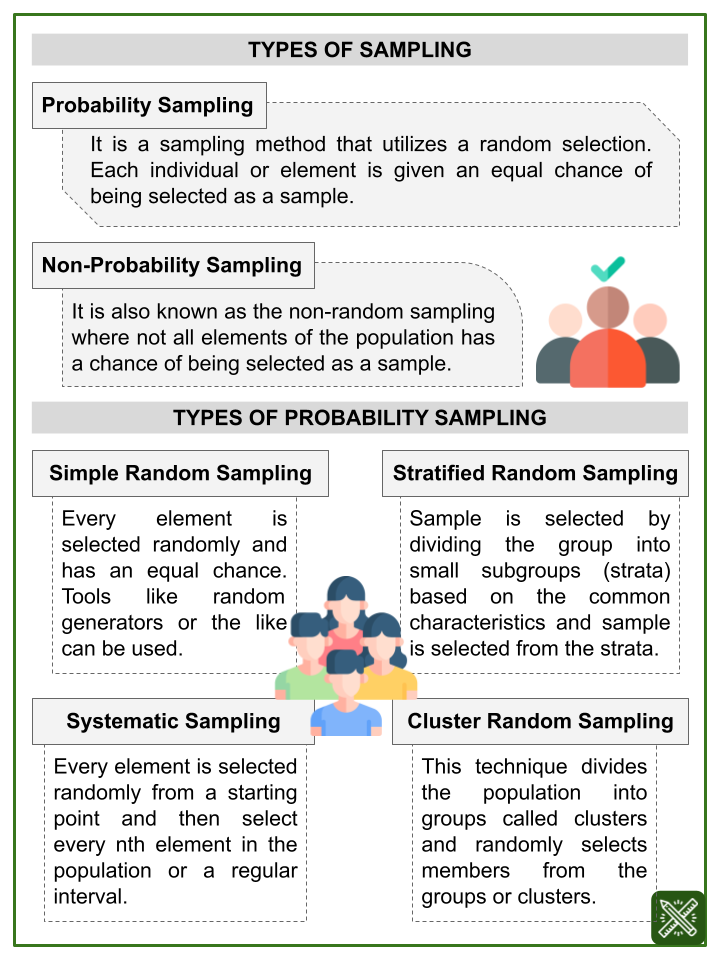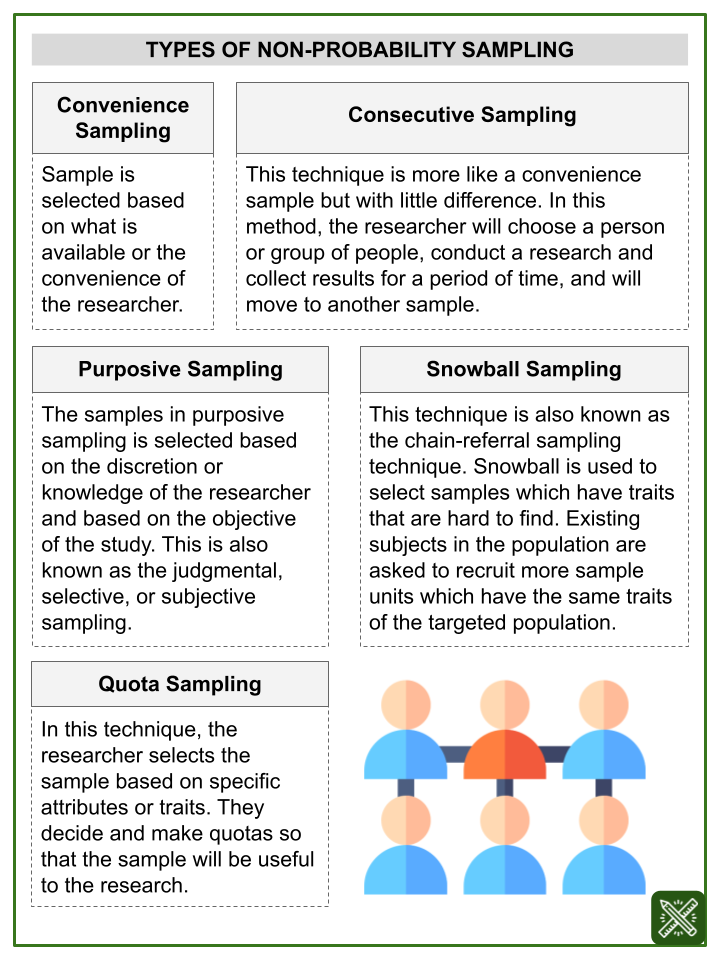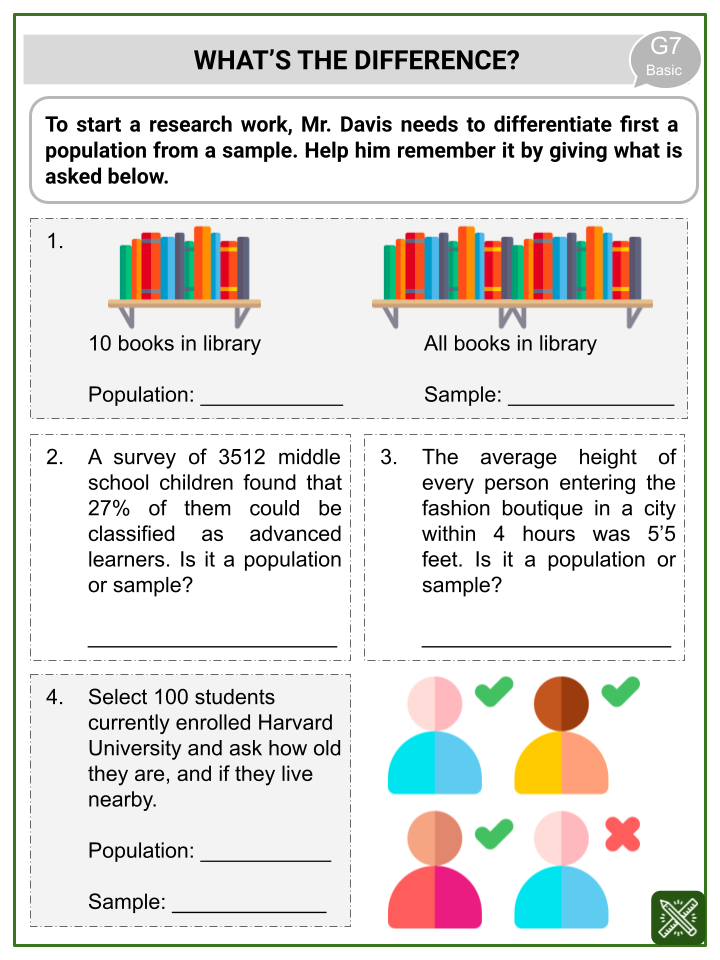Download Sampling Techniques (Research Themed) Worksheets
Click the button below to get instant access to these premium worksheets for use in the classroom or at a home.

This worksheet can be edited by Premium members using the free Google Slides online software. Click the Edit button above to get started.
Download free sample
Not ready to purchase a subscription yet? Click here to download a FREE sample of this worksheet pack.
Definition
Sampling technique is a process of selecting people or a subset of the given population. It is done to make inferences and characterize the whole population.
Summary
- Sampling technique plays an important role in research.
- It is a part of a research work which requires thorough preparation and planning.
- Researchers do not just select a group of people without basis.
- Selecting inappropriate sample will reflect in the final results of the study.
TYPES OF SAMPLING
Probability Sampling – It is a sampling method that utilizes a random selection. Each individual or element is given an equal chance of being selected as a sample.
Non-Probability Sampling – It is also known as the non-random sampling where not all elements of the population has a chance of being selected as a sample.
TYPES OF PROBABILITY SAMPLING
Simple Random Sampling – Every element is selected randomly and has an equal chance. Tools like random generators or the like can be used.
Stratified Random Sampling – Sample is selected by dividing the group into small subgroups (strata) based on the common characteristics and sample is selected from the strata.
Systematic Sampling – Every element is selected randomly from a starting point and then select every nth element in the population or a regular interval.
Cluster Random Sampling – This technique divides the population into groups called clusters and randomly selects members from the groups or clusters.
TYPES OF NON-PROBABILITY SAMPLING
Convenience Sampling – Sample is selected based on what is available or the convenience of the researcher.
Consecutive Sampling – This technique is more like a convenience sample but with little difference. In this method, the researcher will choose a person or group of people, conduct a research and collect results for a period of time, and will move to another sample.
Purposive Sampling – The samples in purposive sampling is selected based on the discretion or knowledge of the researcher and based on the objective of the study. This is also known as the judgmental, selective, or subjective sampling.
Snowball Sampling – This technique is also known as the chain-referral sampling technique. Snowball is used to select samples which have traits that are hard to find. Existing subjects in the population are asked to recruit more sample units which have the same traits of the targeted population.
Quota Sampling – In this technique, the researcher selects the sample based on specific attributes or traits. They decide and make quotas so that the sample will be useful to the research.
Sampling Techniques (Research Themed) Worksheets
This is a fantastic bundle which includes everything you need to know about Sampling Techniques across 21 in-depth pages. These are ready-to-use Common core aligned Kindergarten Math worksheets.
Each ready to use worksheet collection includes 10 activities and an answer guide. Not teaching common core standards? Don’t worry! All our worksheets are completely editable so can be tailored for your curriculum and target audience.
Resource Examples
Click any of the example images below to view a larger version.




Worksheets Activities Included
Ages 11-12 (Basic)
- What’s the Difference?
- Mean the Mishmash
- Name the Sampling Technique
- A True Researcher
- The Right Technique
Ages 12-13 (Advanced)
- The Researcher’s Pairs
- It’s the Best
- The Samples
- On Your Own
- The Why’s









